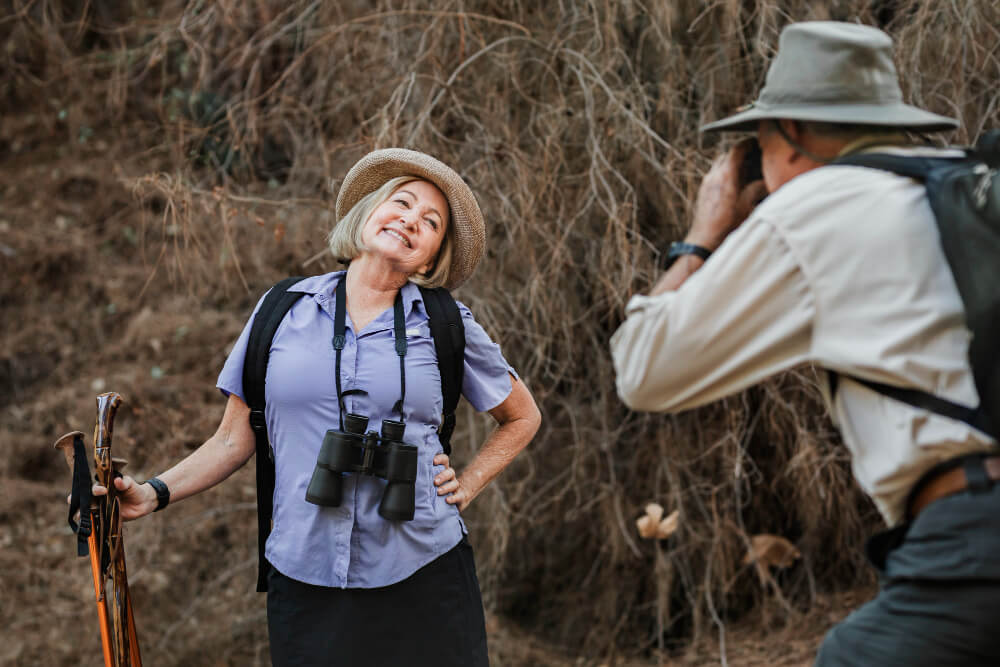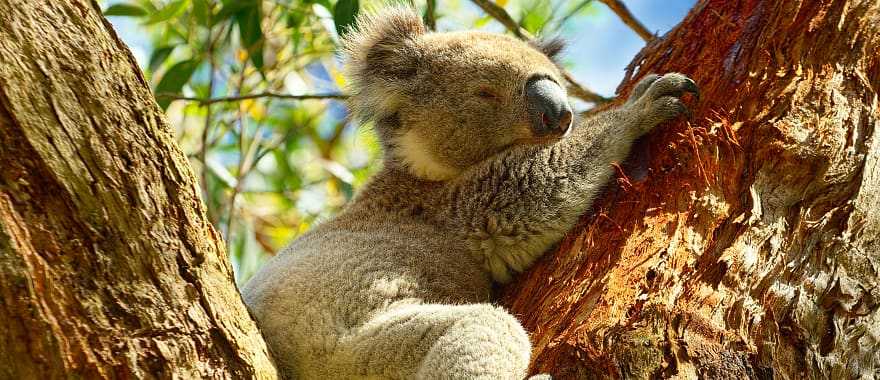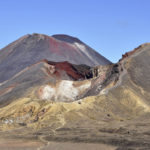
Exploring New Zealand’s rich wildlife is a dream come true, especially for senior travelers seeking unique experiences.
Whether you’re captivated by rare birds, fascinated by marine life, or enchanted by lush forests, New Zealand offers something for every nature lover.
In this guide, we’ll answer common questions, provide practical tips, and share personal stories to help you plan your perfect wildlife adventure.
We’ll dive into detailed descriptions of the flora and fauna you can expect to encounter, recommend top tours, and offer insider tips to make your trip unforgettable. For more information, visit https://www.palaissaguia.com.
Common Questions and Concerns
What unique wildlife can I expect to see in New Zealand?
New Zealand is home to a variety of unique animals and plants that you won’t find anywhere else.
Here are a few highlights:
- Kiwi Birds: These nocturnal, flightless birds are a national symbol. Spotting one in the wild is a rare and special treat. Kiwis are shy creatures, and seeing them involves quiet, careful observation, often during guided night tours.
- Hector’s Dolphins: These are the world’s smallest and rarest marine dolphins. They are easily recognized by their distinctive round dorsal fin and are often seen off the South Island’s coast.
- Tuatara: This ancient reptile, often referred to as a “living fossil,” has survived since the age of the dinosaurs. Tuataras are unique to New Zealand and can be seen in wildlife reserves and sanctuaries.
- New Zealand Fur Seals: Found along the coastlines, these seals are known for their playful nature and can often be seen basking on rocks or swimming near the shore.
- Kākā and Kea Parrots: These native parrots are known for their intelligence and playful behavior. The kea, in particular, is famous for its curiosity and cheekiness.
- Native Forests: New Zealand’s forests are home to giant kauri trees, silver ferns, and a host of endemic plant species. These forests are a botanist’s dream, with unique flora such as the pūriri tree and rimu.
Is it safe for seniors to go on wildlife tours?
Absolutely! New Zealand is known for its well-organized and safe tour options.
Many tours cater specifically to seniors, offering comfortable transportation, easy walking paths, and knowledgeable guides who ensure a safe and enjoyable experience.
Here are a few tips to ensure your safety:
- Choose Reputable Tours: Opt for tours with good reviews and experienced guides. Companies like Real Journeys and Eco Wanaka Adventures are known for their excellent service and safety standards.
- Communicate Your Needs: Inform the tour operator about any special requirements or medical conditions you have. This will help them tailor the experience to your needs.
- Stay Hydrated and Protected: Bring water, wear sunscreen, and have insect repellent on hand. New Zealand’s UV levels can be high, and staying protected is crucial.
How can I prepare for a wildlife tour?
Preparation is key to a great trip.
Here are some tips:
- Comfortable Clothing: Wear layers, as New Zealand’s weather can change quickly. A light waterproof jacket is also a good idea.
- Good Footwear: Sturdy, non-slip shoes are essential for walking in forests and along beaches. Consider bringing hiking boots if you plan on doing more strenuous walks.
- Sunscreen and Insect Repellent: Protect your skin from the sun and pesky bugs. New Zealand’s sand flies can be particularly bothersome near water.
- Binoculars and Camera: Capture those unforgettable moments with the right gear. Binoculars are especially useful for birdwatching and spotting distant marine life.
- Medications and First Aid Kit: Bring any necessary medications and a basic first aid kit, including band-aids, antiseptic wipes, and pain relievers.
Detailed Wildlife Descriptions
Kiwi Birds
The kiwi bird is perhaps the most iconic symbol of New Zealand wildlife.
These flightless birds are unique in many ways: they have nostrils at the end of their long beaks, are nocturnal, and have an exceptional sense of smell.
Kiwi birds are endangered, making sightings all the more special.
To see these birds, you’ll need to venture into sanctuaries or join guided night tours in places like the Northland or Stewart Island.
Hector’s Dolphins
Hector’s dolphins are a must-see for any marine wildlife enthusiast.
They are only found in the waters around New Zealand and are easily identified by their small size and rounded dorsal fins.
The best way to see them is on a boat tour from Akaroa or the West Coast.
These tours often combine dolphin watching with other marine activities like swimming or snorkeling.
Tuatara
Tuatara are remarkable reptiles, often mistaken for lizards but belonging to a unique order all their own.
They have a third “parietal” eye on the top of their heads, which is visible in juveniles but becomes covered with scales as they mature.
Tuatara are primarily found in wildlife sanctuaries, with the most accessible population being at Zealandia in Wellington.
New Zealand Fur Seals
These playful and curious animals are found all around the coast of New Zealand.
They have external ears and use their flippers to walk on land, distinguishing them from other seals.
The best places to see them are the seal colonies in Kaikoura and the Otago Peninsula, where you can often get quite close to observe their antics.
Kākā and Kea Parrots
The kākā and kea are two of New Zealand’s native parrots. The kākā is a forest parrot with a striking red and olive plumage, best seen in the native forests and sanctuaries.
The kea, on the other hand, is found in alpine regions and is known for its intelligence and mischievous behavior.
The kea is especially famous for its tendency to investigate and sometimes damage cars in its quest for food.

Native Forests
New Zealand’s forests are ancient and diverse. The kauri tree is one of the largest and longest-living tree species in the world.
Tane Mahuta, located in Waipoua Forest, is the most famous kauri tree and is often referred to as the “Lord of the Forest.” Other notable trees include the rimu, with its weeping branches, and the distinctive ponga, or silver fern, which is an emblem of New Zealand.
Top Wildlife Tours in New Zealand
Kiwi Birdwatching Tours in Northland
- Highlights: Evening tours to see kiwi birds in their natural habitat.
- Tips: Bring a flashlight with a red filter to avoid startling the birds. Tours often start late in the evening, so be prepared for a late night.
Dolphin and Whale Watching in Kaikoura
- Highlights: Spot dusky dolphins, sperm whales, and sometimes orcas. Kaikoura is one of the few places in the world where you can see sperm whales so close to shore.
- Tips: Take motion sickness tablets if you’re prone to seasickness. The tours can last several hours, so bring snacks and water.
Guided Walks in Fiordland National Park
- Highlights: Experience ancient forests and stunning waterfalls. The Milford and Routeburn tracks offer breathtaking scenery and are considered some of the best walks in the world.
- Tips: Join a guided walk to learn about the local flora and fauna. These walks vary in difficulty, so choose one that matches your fitness level.
Birdwatching in Stewart Island
- Highlights: Stewart Island is a birdwatcher’s paradise, with the chance to see rare species like the Stewart Island robin and the endangered yellow-eyed penguin.
- Tips: Stay overnight to fully experience the island’s wildlife. The island is also a great place to see kiwi birds in the wild.
Seal and Sea Lion Viewing on the Otago Peninsula
- Highlights: The Otago Peninsula is home to a large population of New Zealand fur seals and sea lions. You can also spot albatrosses and other seabirds.
- Tips: Visit the Royal Albatross Centre for a guided tour. The best time to see seals is during low tide when they come ashore to rest.
Penguin Watching in Oamaru
- Highlights: Oamaru is famous for its blue penguin colony. Watching these little penguins return to their nests at dusk is a magical experience.
- Tips: Dress warmly, as it can get chilly by the water in the evening. The viewing stands provide a great vantage point without disturbing the penguins.
Personal Stories
“I never thought I’d see a kiwi bird up close, but on a night tour in Northland, there it was – pecking at the ground just a few feet away. Our guide was fantastic, sharing fascinating facts about these elusive creatures.” – Helen, 67
“The dolphin watching tour in Kaikoura was unforgettable. Seeing the dolphins leap and play around our boat brought tears to my eyes. The crew took great care of everyone, making sure we were comfortable and informed.” – John, 72
“Visiting the fur seal colony on the Otago Peninsula was a highlight of our trip. The seals were so playful and curious. We even saw a few pups playing in the shallow waters.” – Mary and Bill, 69 and 71
“Our guided walk in Fiordland was breathtaking. The ancient trees, the moss-covered ground, and the distant sound of waterfalls made it feel like stepping into another world. Our guide’s knowledge of the local plants and animals enriched the experience.” – Alice, 65
Practical Tips for Senior Travelers
- Plan Ahead: Book your tours in advance, especially during peak seasons. This ensures you get a spot on the best tours and can plan your itinerary effectively.
- Travel Insurance: Make sure to have comprehensive travel insurance that covers medical emergencies and cancellations. This provides peace of mind during your trip.
- Health Precautions: If you have any health concerns, consult your doctor before traveling. Bring extra medication and a copy of your prescriptions.
- Stay Connected: Keep your family and friends informed about your itinerary. Carry a mobile phone with local SIM or international roaming.
- Pace Yourself: Allow time for rest and relaxation. Don’t over-schedule your days. Enjoying the scenery and wildlife at a leisurely pace can be more rewarding.
- Local Cuisine: Try New Zealand’s local food. From fresh seafood to lamb and kiwifruit, the cuisine is diverse and delicious. Don’t miss trying a traditional Maori hangi meal.
Conclusion
New Zealand’s wildlife offers a unique and enriching experience for senior travelers.
From the iconic kiwi bird to the playful Hector’s dolphins, the country’s flora and fauna are a testament to its natural beauty and biodiversity.
By following our tips and recommendations, you can enjoy safe, comfortable, and unforgettable wildlife encounters.
Whether it’s your first visit or you’re returning for another adventure, New Zealand’s wild wonders await you. So pack your bags, grab your camera, and get ready for the trip of a lifetime!
FAQs
Can we touch the animals during the encounters?
No, lemurs are wild and take offense to being touched. They may come onto your shoulder, but that is up to them.
Capybaras will enjoy a scratch at the keeper’s discretion.
Can I just do an encounter without visiting the rest of the reserve?
No, the encounters are an ‘add-on’ experience to your reserve ticket. You must visit the reserve to participate in the encounters.
Do I still need to check in if I’ve booked an encounter?
Yes, you must check in at the front desk. They will confirm your booking and go over the health and safety guidelines.
Why are there age limits on children for encounters?
The age limits are in place to ensure the safety of both the children and the animals. Younger children may run around or be scared, which could upset the animals. All participants must have the ability to follow instructions in an emergency.
Why is the age limit higher for the Capybara Encounter?
The age limit is higher for the Capybara Encounter because capybaras are larger animals that can weigh more than 50 kg.
Younger children may not be able to handle the size and strength of these animals safely.






